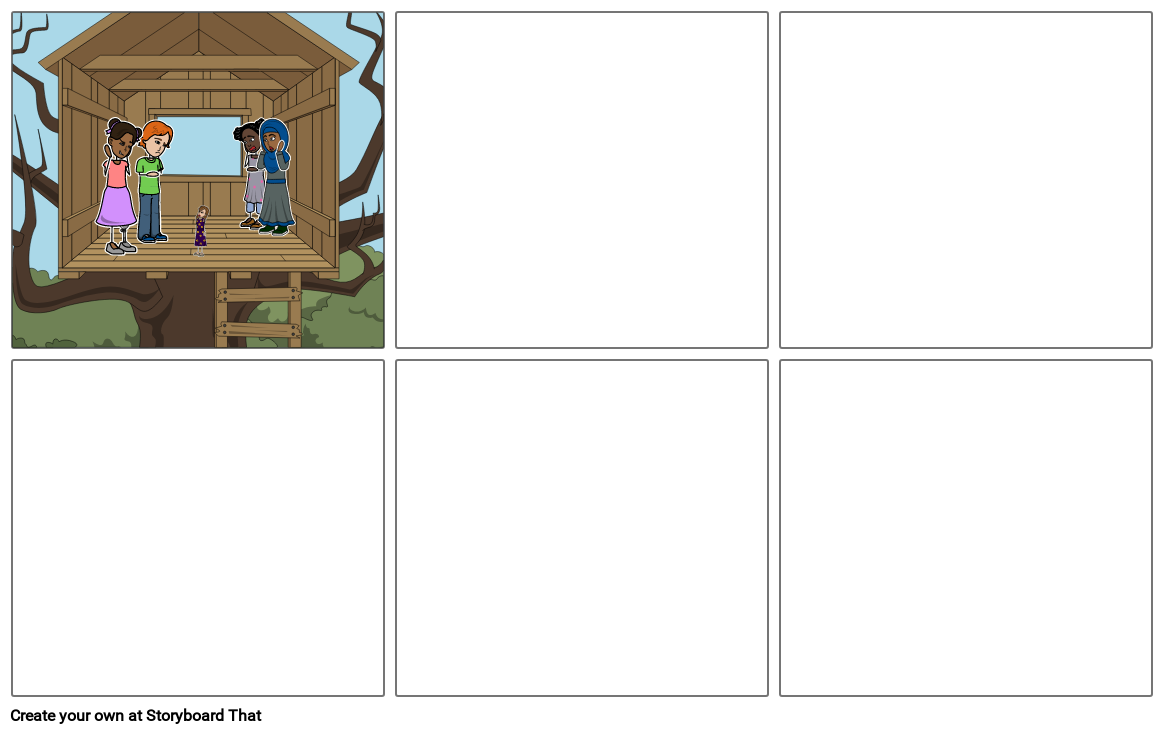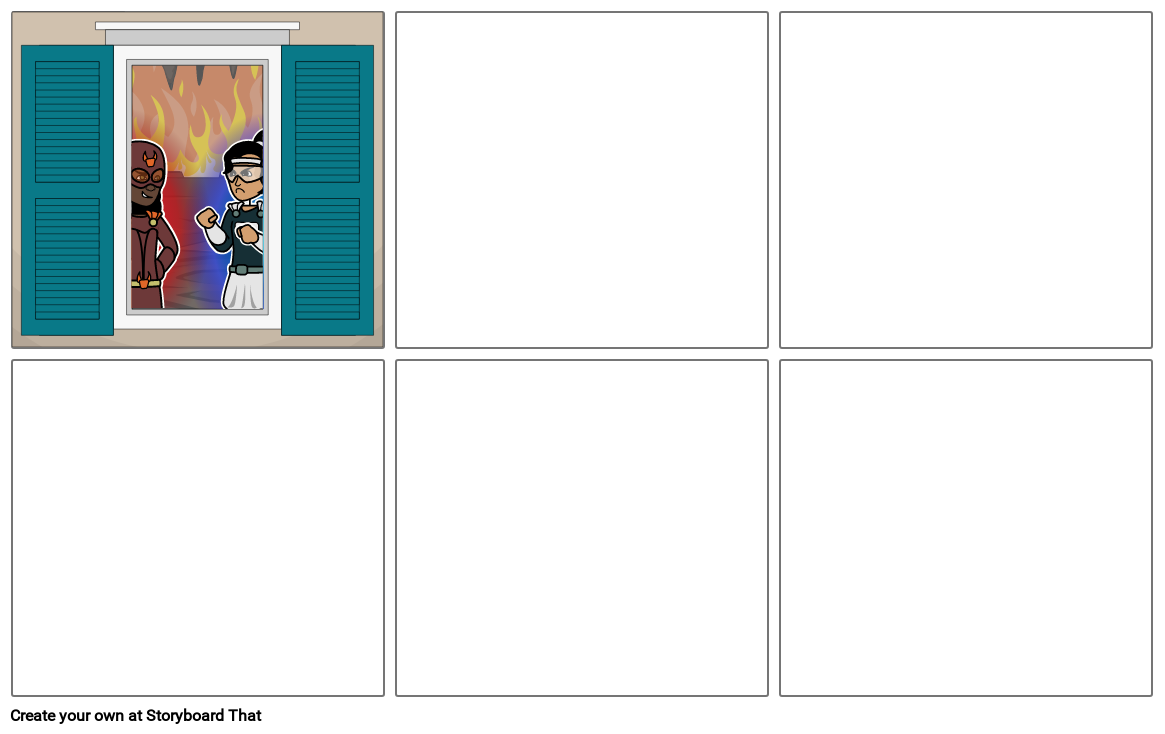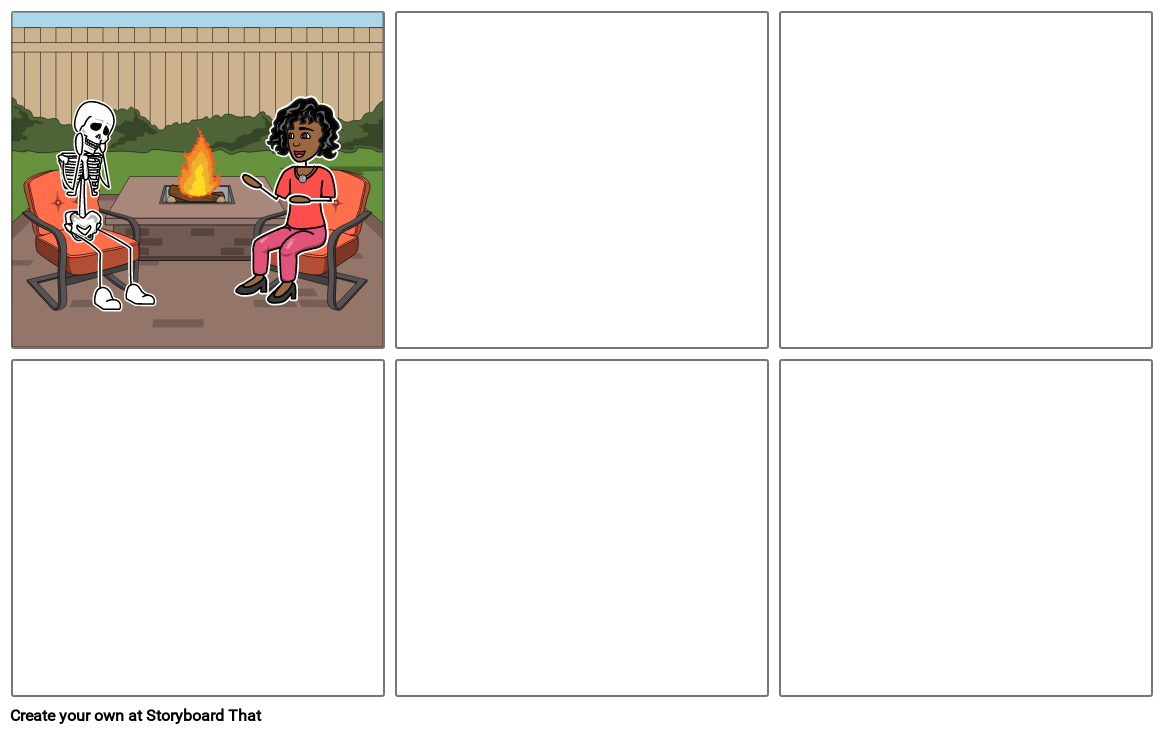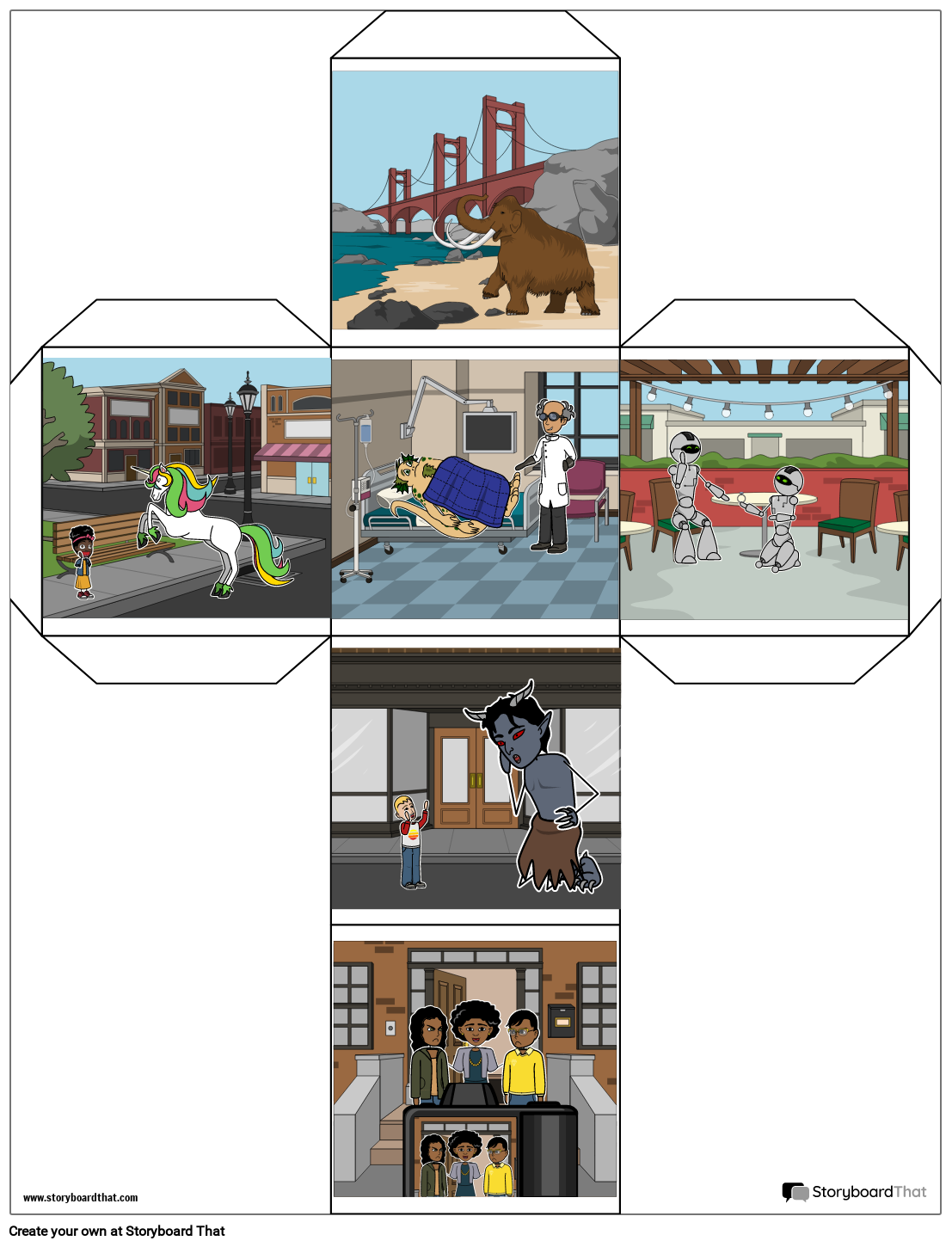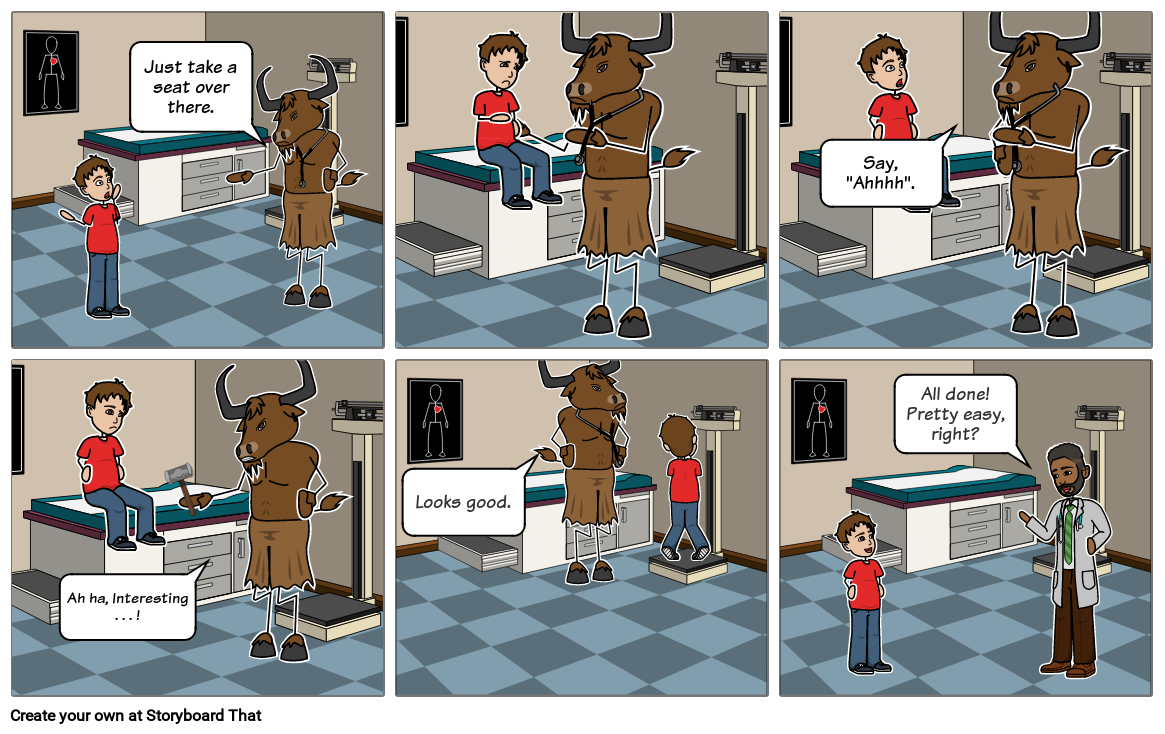Finding Writing Ideas
Writer’s block. Everybody’s been there. Especially students who don’t like to write.
Writing Workshop in school can be a very difficult part of a student’s day. Some kids take naturally to the task of putting their thoughts to paper, but there are many who struggle. The hardest part is often getting ideas down in the first place. Blank pages, whether a piece of paper or a word processing document, can be extremely intimidating, and even starting to plan or come up with ideas can stump students. Many people can’t get past that empty white space.
But think: the human brain is amazing.
The brain can associate events, people, and concepts with a blend of imagery, sounds, emotions, descriptive words, tastes, impressions, and more. Processing all that information and then synthesizing it into just words is challenging. Help young writers get past that blankness with a visual story starter or creative writing prompt! Storyboard That will help students get the words flowing and the ideas blossoming!
What is a Story Starter or Writing Prompt?

A story starter or writing prompt is a sentence or two that gives the writer an idea of what to write about. It could be a question, a starting scene, a picture, or many thing combined. The idea is to give writers a starting off point, so that they don’t have to think of a writing topic from scratch.
Storyboard That has come up with a variety of story starters or daily writing prompts to help people get thinking about narratives. Storytelling is a part of everyone’s daily life, and we want more people to feel confident in telling all of their stories. Our starters are single cells comprised of various scenes, characters, and items. Many of them are intended to be ambiguous, strange, or indicative of an upcoming change. The story starter could be just a picture of a character in a scene, and sometimes there is a lot of action involved.
The point of these picture prompts for creative writing is to get you thinking, NOT necessarily to get you to write a story about the specific image. The person who created the image may have been thinking one thing when making it, and the person responding to the image could have a completely different reaction. In fact, the story starter may lead to a seemingly unrelated story, and that is A-OK.
Here’s a picture. Let’s write about it.
Sometimes simple and interesting writing prompts are all somebody needs. However, struggling writers may need a little extra help in getting started. One way to get somebody thinking is to ask questions (thanks, Socrates). Focus questions around different parts of the story starter.

Identify characters, if any. Give them names. How are characters related? Do physical characteristics, including age, clothing, appearance, and pose indicate anything to you? What are the background stories of the characters?
Identify setting, if any. Where is this? When is this? How did the characters/objects get there? Why are the characters/objects there? Where are they going? Is there something odd about the characters or objects in this particular setting?
Identify action, if any. What is happening? What JUST happened? What is about to happen? What would (or could) happen if everything stayed the same or continued on the same course?
Identify mood or emotional feel, if any. Is the setting or situation happy, spooky, sad, confusing, uncomfortable, funny? What is normal in this situation or setting? What emotions do the characters feel? Why do they feel that way? What would they do next because they feel that way? What are they thinking?
Identify items, if any. What are these things? Do they belong there? What’s missing? What are the items for? How are the items being used? What other items could be added and why?
In the process of thinking about and answering these questions, new ideas could spring up from anywhere! Associations from a single image or question may take your writers on an incredible journey in multiple directions. Let students be creative, and guide them when they need it! Create your own story starters using Storyboard That.
Why is Creative Writing Important?
The ability to write creatively has many benefits. A few of the benefits are listed below.
- One benefit is that creative writing helps us express ourselves. Writing creatively activates our brains in way that helps us build communication and interpersonal skills.
- Another benefit of creative writing is that it gives us an opportunity to practice grammar and technical skills in an engaging way. Chances are that we will all use writing throughout our lives, and it’s important to have the basic writing skills needed to do so.
- Another benefit of creative writing is that it builds empathy. When we read and write creative stories, we often put ourselves in the shoes of the characters. This helps build character and kindness towards others.
- Creative writing helps to broaden our vocabulary. Since it gives children and adults the opportunity to potentially combine many different topics, the words they use will vary in complexity and meaning.
- Creative writing helps students get their feelings out and down on paper. Writing a make-believe story about a character who has similar thoughts and issues as oneself can be very helpful to students who are struggling with something personal and real.
Not only does creative writing have many benefits when it comes to strengthening our brain and skills, it is also a lot of fun!
Need some creative writing ideas for the classroom? Storyboard That has got you covered. Check out our ideas for all ages below, and don’t forget to storyboard your ideas and your story for an extra element of creativity and engagement!
Creative Writing Prompts for Kids
and Writing Prompts Ideas
Our former teachers have put together a list of interesting writing prompts for all ages. We understand that writing prompts for college students’ creative writing differs greatly from creative writing prompts for kids, so we have broken up our ideas into subcategories to help you get started. The best creative writing prompts and visual prompts for creative writing are open to interpretation and provide enough information to get started, while allowing lots of room for creative freedom.
Creative Writing Prompts for Students: Elementary School
Good writing prompts for the younger age group can vary depending on grade. For example, your kindergarten through second grade students would benefit from story starters that just contain pictures, or simple writing prompts that do not require much comprehension. The upper elementary students are becoming more technologically savvy, and may prefer online writing prompts that they can search for themselves and work on digitally. Here are some ideas to help make creative writing for students fun and engaging
- Make up a story about why the sky is blue.
- There once was a little girl who ate nothing but strawberries. What happens to her?
- There is a camel wandering around your school. Why? What’s its story?
- You wake up one morning and your dog starts talking to you. What happens next?
- A new student joins your class and says he’s from the year 1645. Who is he? What is doing here now?
- I was walking in the forest one day, when I heard someone call my name. I turned around and it was…
- There was a knock on the front door. I opened it to find a unicorn, and wizard, and a tiger standing there.
- Make up a story about a whale and a dolphin who become best friends.
- You go into your closet to find your favorite sweater, and you notice a small door in the corner. You open in and realize it’s a portal to a magical land.
- There’s a house at the end of the street that everyone thinks is haunted by the witch that used to live there. You and your two best friends decide to investigate.
Creative Writing Prompts for Middle School
The middle school years are when children are coming into their own, figuring out who they are, and finding their voices. Good creative writing prompts for middle school students should focus on things that pre-teens and teens are interested in and can relate to.
- You are swimming at the town lake when suddenly, you feel something brush up against your feet.
- You open the front door and see that your package has finally arrived. It’s glowing a reddish glow; you have to get it inside quickly!
- Write a story about two sisters who travel back in time.
- You wake up and you are not in your room. Your bed is in the middle of the forest.
- If you could write, produce, and direct a reality tv show, what would it be about?
- Your principal comes on the loud speaker and says that everyone has the rest of the day off from school. What will you do?
- While you are scuba diving, you discover a tin box at the bottom of the ocean. When you bring it to the surface and open it, what do you find inside?
- Your parents go away for a week and tell you and your siblings that there are no rules while they are gone. How do you spend the week?
- Write a story about a turtle, a coffee cup, a pack of gum, a bear, and a pair of slippers.
- Your favorite musician calls you up on the stage to join them in a song. What do you do? What song do you sing?
Creative Writing Prompts for High School
As students enter high school, they tend to focus more on writing reports, essays, and creative writing may not be as interesting to them or prevalent in the classroom. Here are some unique writing prompts examples that appeal to older students.
- Create your own brand new holiday. Tell a story about how that holiday began.
- You meet your life-long hero. What do you do together? What do you talk about?
- You and your friends find a time machine that travels 100 years into the future. You hop in and see where it takes you.
- You discover that your recent TikToc video has gone viral.
- Find the book that’s closest to you and open it to page 12. Without looking, randomly point to a part of the page. Write a story using the sentence that you are pointing to as the first line in the story.
- Write a story about the world today without cell phones.
- A group of aliens come down to earth and ask you and your friends to show them around town. What do you do? Where do you take them?
- Write a letter to your 50 year old self. Where do you think you will be at that point in life?
- Should schools have a dress code? Why or why not?
- Do you want to go to college after high school? If so, where do you want to go? If not, what would you like to do for your career?
Creative Writing Prompts for Adults
Guess what? Story starters and writing prompts are fun for adults too! Although adults are busy, daily creative writing prompts could be a fun way to start the day. Don’t have time? We’ve got some short creative writing prompts for adults on hand as well.
- You are back in time speaking to your teenage self. What is the conversation about?
- If you could spend two hours with anyone, living or deceased, who would it be? What would you do together?
- You are magically transported into your favorite book. What adventures await you?
- You are given the super power of your choice. What is it and how would you use it for good?
- You are given five million dollars. What would you do with it?
Creative writing for adults can be fun! Enjoy!
Creative Writing for Social and Emotional Learning
Social and emotional learning, or SEL, is a very important part of a child’s education. It teaches children self-management, self-awareness, social awareness, relationship skills, and responsible decision making skills. Social and emotional learning can be difficult to teach in school, as it deals with feelings, emotions, and sometimes difficult topics. Reading picture books about these topics makes discussions less intimidating, and writing about these issues can help as well. One way to get students thinking about social and emotional topics is to have them write. Here are some useful suggestions to help get the ideas churning.
- When was the last time you did something nice for someone, just because?
- What are some of the characteristics that you look for in a friend? Do you think that you possess those characteristics yourself?
- What is something that really scares you? Have you ever tried to get over this fear?
- Write about a time when you tried something new. Did you like it? How did it feel to try something new?
- What is the best advice you have ever received? What is the best advice you have ever given?
- What is something that is challenging for you? What is something that comes easy to you?
- Being disappointed is not fun, yet it happens often in life. Can you think about a time when you were disappointed? What happened? How did you react?
- Think about a time when you felt really safe. What did that feel like? Who were you with?
- What is something that makes you really happy?
- What is your favorite thing about yourself?
Copy These Story Starters or Make Your Own!
Try adding these picture prompts for creative writing to your day!
Simply copy the storyboard and use it as a template in an assignment for your students! The best part? You can change our pictures and templates to suit the interests of your students, or simply leave them as is!
Printing Creative Writing Picture Prompts

Storyboard That also offers several print options if you want to take our writing prompts offline! You can use these story starters or have students make their own. One cell is all you need! Then, when you go to print, select one cell per page and you will see these many options including lines for writing and name and date at the top! This is a great activity for a creative writing station, soft starts in the morning or choice time in the afternoon. Teachers could even combine every students storyboard into a giant creative writing prompts packet for students to work on throughout the year.
Make Story Cubes!
Story cubes are great for helping students come up with awesome stories. They can roll characters, props, weather, scenes, and more, and craft stories out of their results! Create your own story cubes or have your students create some to share with their classmates for collaborative storytelling!
Storyboard That Ideas
A great next step to take for a struggling writer is to storyboard first! If writing/typing the words is too much of a challenge, show what happens next with images. Create a narrative in three or six cells to get the basic idea ready, then flesh out the idea in text!
Related Activities
How To Use Story Starters To Foster Critical Thinking And Analysis Skills, Such As Predicting Outcomes Or Exploring Multiple Perspectives
Introduce the story starters
Begin by introducing a variety of story starters to your students. These can be written prompts or images that inspire a story. Encourage students to choose a story starter that speaks to them and that they find interesting.
Explore multiple perspectives
Ask your students to think about the different perspectives that could be taken in response to the story starter. Encourage them to consider different characters, settings, and events that could occur as a result of the prompt.
Predict outcomes
Have your students use critical thinking skills to predict what might happen in their stories. Encourage them to consider cause-and-effect relationships, and to think about how different actions and events could impact the outcome of the story.
Draft the story
Give students time to draft their stories. Encourage them to write freely and explore different possibilities. Emphasize that the goal is to generate ideas and see where the story takes them.
Peer review
Once the stories are drafted, have students exchange their stories with a partner. Encourage them to provide feedback on the critical thinking skills exhibited in the story. Ask them to consider whether the story effectively explores multiple perspectives or predicts outcomes in an interesting and engaging way.
Revise and refine
Based on the feedback they receive, have students revise and refine their stories. Encourage them to continue to explore multiple perspectives and use critical thinking skills to predict outcomes.
Share with the class
Finally, have students share their stories with the class. Encourage them to discuss the critical thinking skills they used and the challenges they faced when exploring multiple perspectives and predicting outcomes. Celebrate their creativity and encourage them to continue to use critical thinking skills in their writing.
Frequently Asked Questions about Creative Writing Prompts
What are good creative writing prompts for middle school students?
Creative writing prompts for middle school students should focus on things that kids of their age can relate to. Some examples of things that interest middle schoolers are: friends, family, movies, social media, sports, traveling, and music.
What is a story starter?
A story starter is anything that aids the writer in beginning their creative story. A story starter could be a picture or words, simple or action packed, silly, ambiguous, or serious.
What are some ideas for creative writing story starters?
1. Create your own brand new holiday. Tell a story about how that holiday began.
2. Write a story about two sisters who travel back in time.
3. You wake up one morning and your dog starts talking to you. What happens next?
© 2024 - Clever Prototypes, LLC - All rights reserved.
StoryboardThat is a trademark of Clever Prototypes, LLC, and Registered in U.S. Patent and Trademark Office

